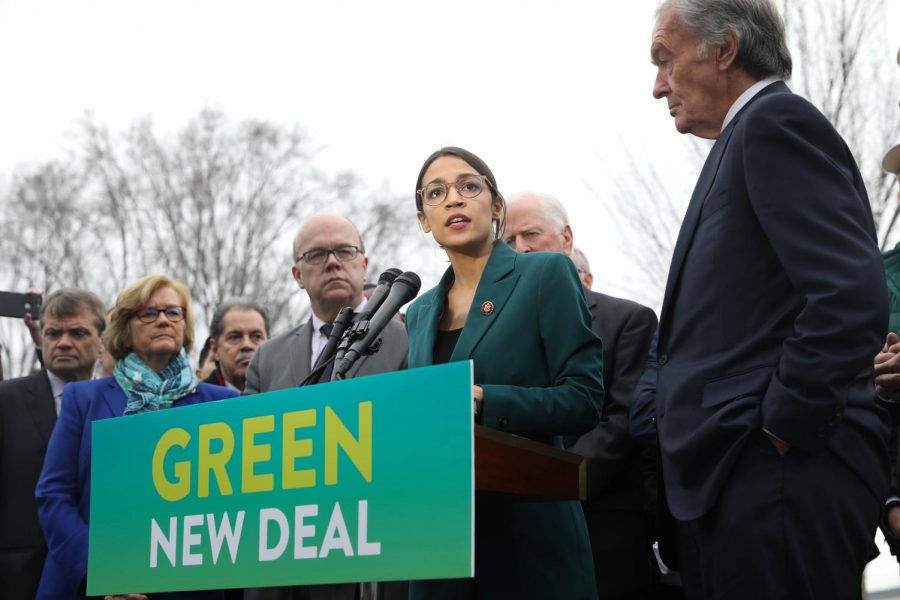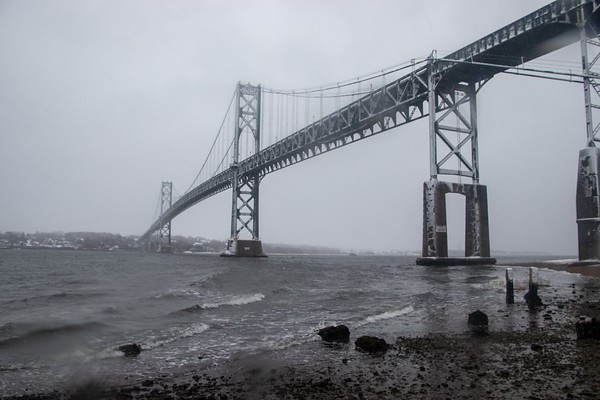Is the U.S. ready for a Green New Deal?
New York Representative Alexandria Ocasio-Cortez (center) and Massachusetts Senator Ed Markey (right) propose the Green New Deal in February 2019.
Two years ago, a very popular and controversial resolution was introduced to the United States Congress advising for a strong and immediate response to climate change. This call for a Green New Deal from New York Representative Alexandria Ocasio-Cortez and Massachusetts Senator Ed Markey called for the country to switch focus toward green technology, energy and jobs as a way of combating the looming climate crisis.
While the resolution was able to pass in the House of Representatives in 2019, it was not able to garner enough support in the Senate. Just over a week ago, Ocasio-Cortez and Markey reintroduced the resolution. Though support for a Green New Deal and climate justice is as strong as ever, its cost and time frame of 10 years to accomplish these goals has drawn just as much criticism. This begs the question: Is the United States ready and willing to undergo a complete overhaul of American infrastructure and make climate change the primary national focus?
On April 20, 2021, Markey and Ocasio-Cortez held a press conference to reintroduce the resolution for a Green New Deal as well as a bill to create a Civilian Climate Corps as a way to create new jobs and combat climate change. One of the biggest complaints from critics is that the potential Green New Deal would cost nearly $100 trillion during the 10-year goal, with $93 trillion being the most cited figure. However, it has been noted that it is nearly impossible to put a definitive price tag on the plan. Douglas Holtz-Eakin, president of the American Action Forum, estimated the cost of a Green New Deal and stated the $93 trillion estimate is misleading. He said a more accurate representation would be $50 trillion to $90 trillion.
Even still, the hefty potential cost of the Green New Deal may end up being a burden on taxpayers, but it doesn’t have to be. U.S. Secretary of the Treasury Janet Yellen has advocated for private investors and wealthy Americans to aid in paying for a green economy and believes many are willing to do so. Yellen cited an estimate of $2.5 trillion a year to be handled mostly by private capital.
Another portion of the press conference revolved around the possible introduction of a Civilian Climate Corps. This is based on the Civilian Conservation Corps created by former President Franklin D. Roosevelt as part of the New Deal in 1933 and focuses on giving jobs and training to a new generation of workers to promote conservation of federally owned land. Shortly after his inauguration, President Biden signed an executive order to reintroduce the Conservation Corps as a Climate Corps.
With so much being proposed in the Green New Deal resolution, is the United States ready for such an undertaking? Personally, as much as I would love to see immediate action be taken, I do not expect it to happen any time soon with the never-ending criticism and opposition to the idea.
Nevertheless, even if a Green New Deal does not happen soon, there are already many climate-focused initiatives that are working to combat climate change and work toward a green economy. As Ocasio-Cortez stated during the press conference, “To me, the greatest risk is doing nothing on climate or doing too little.”

Sam Elwell is the Managing Editor for The Hawks' Herald who has also served as the Opinions Editor (2021-2022) as well as a staff writer (2020...






